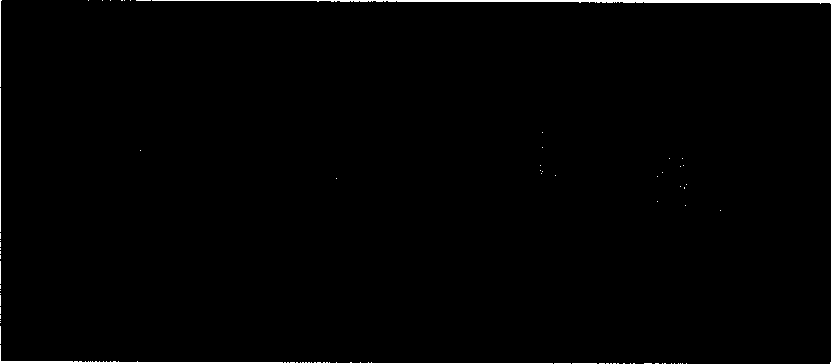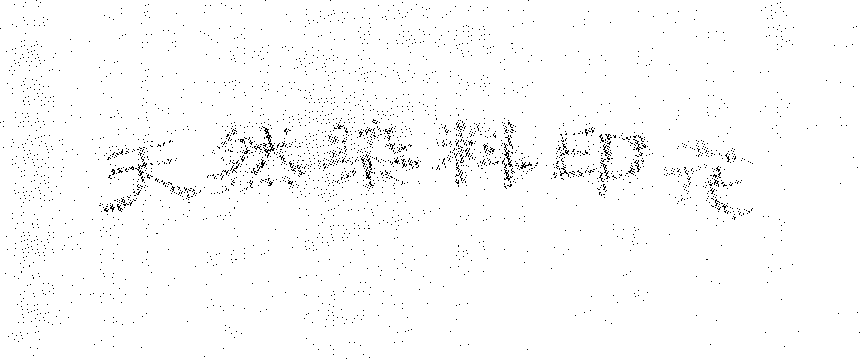Method for mordant printing on fabric dyed by natural vegetable dye
A natural vegetable dye and printing technology, applied in the field of natural source dyes and textile printing with natural vegetable dyes, can solve problems such as varieties and monotonous patterns, and achieve the effects of increasing beauty, increasing added value and upgrading grades.
- Summary
- Abstract
- Description
- Claims
- Application Information
AI Technical Summary
Problems solved by technology
Method used
Image
Examples
example 1
[0037] Preparation of mordant printing paste for red madder printing fabric: raw material weight ratio:
[0038] Mordant 60kg
[0039] Thickener 170kg
[0040] Penetrant 70kg
[0041] Anti-seepage agent 70kg
[0042] Total 370kg
[0043] The mordant is alum, the thickener is CMC, the penetrating agent is a nonionic surfactant JFC, and the anti-seepage agent is a semi-emulsified paste containing kerosene. It will be prepared by mixing and stirring, and the final viscosity of the printing paste will reach 200-400cps.
[0044] Use this printing paste to print the fabric, and the process is that the fabric is printed, baked, washed and dried. Baking temperature: 145-150°C, time: 3min. After drying, it becomes as attached figure 1 Prints shown.
example 2
[0046] Preparation of printing paste for yellow cypress printing fabric: Raw material weight ratio:
[0047] Mordant 90kg
[0048] Thickener 190kg
[0049] Penetrant 70kg
[0050] Anti-seepage agent 80kg
[0051] Total 430kg
[0052] The mordant is loess, the thickener is CMC, the penetrating agent is nonionic surfactant JFC, and the anti-seepage agent is semi-emulsion paste containing kerosene. It will be prepared by mixing and stirring, and the final viscosity of the printing paste will reach 200-400cps.
[0053] Use this printing paste to print the fabric. The process is that the fabric is printed, steamed, washed and dried. Steaming temperature: 130-140°C, time: 3min. After drying, it becomes as attached figure 2 Prints shown.
example 3
[0055] Preparation of printing paste for gray Galla-colored printed fabric: Raw material weight ratio:
[0056] Mordant 90kg
[0057] Thickener 210kg
[0058] Penetrant 80kg
[0059] Anti-seepage agent 70kg
[0060] Total 450kg
[0061]The mordant is alum, the thickener is CMC, the penetrating agent is a nonionic surfactant JFC, and the anti-seepage agent is a semi-emulsified paste containing kerosene. It will be prepared by mixing and stirring, and the final viscosity of the printing paste will reach 200-400cps.
[0062] Use this printing paste to print the fabric, and the process is that the fabric is printed, baked, washed and dried. Baking temperature: 145-150°C, time: 3min. After drying, it becomes as attached image 3 Prints shown.
PUM
| Property | Measurement | Unit |
|---|---|---|
| Viscosity | aaaaa | aaaaa |
Abstract
Description
Claims
Application Information
 Login to View More
Login to View More - R&D
- Intellectual Property
- Life Sciences
- Materials
- Tech Scout
- Unparalleled Data Quality
- Higher Quality Content
- 60% Fewer Hallucinations
Browse by: Latest US Patents, China's latest patents, Technical Efficacy Thesaurus, Application Domain, Technology Topic, Popular Technical Reports.
© 2025 PatSnap. All rights reserved.Legal|Privacy policy|Modern Slavery Act Transparency Statement|Sitemap|About US| Contact US: help@patsnap.com



